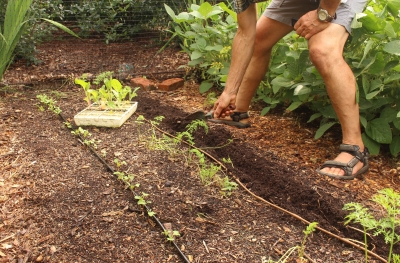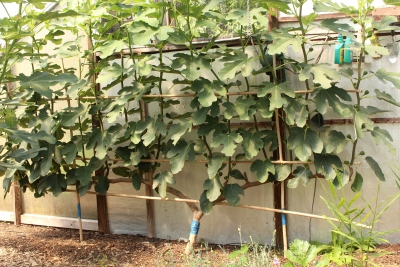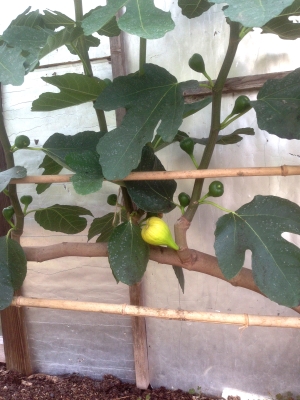HOT DAYS, BUT PREPARING FOR FALL
Ignoring My Gut
Like other parents, I don’t hold back preparing for fall just because of hot, sun-drenched sunny days. But my preparations don’t entail trips to the store for notebooks, pencils, rulers, and other school gear. My daughter is old enough to gear up for herself. Instead, I’m preparing for a garden that becomes lush with ”cool weather” vegetables just as tomatoes, peppers, okra, and other warm weather vegetables are fading OUT.
Much of gardening entails NOT going with your gut. If I went with my gut, I’d be planting more tomatoes and sweet corn and, perhaps, if I was really going with my gut, even banana trees on today’s ninety plus degree, bright, sunny, humid day.
Although tomatoes, peppers, and cucumbers presently have more appeal, fall vegetables will have their day. I have to remind myself how a lowering sun and cooler weather make more appealing the lush green leaves of cabbages, brussels sprouts, endive, lettuce, kale, celery, and, below ground, radishes, turnips, carrots, and celeriac. And anyway, I’ll have no choice because summer vegetables will have waned by then.
That lush fall garden, almost like a whole new garden, comes about only if I do something about it now!
To Every Thing There is a Season, a Time to Plant, A Time to…
Timing is (almost) everything for a productive fall garden. Planted too early, some leafy fall vegetables bolt — send up tough seed stalks — because of heat and long days. Right now, I’m sowing turnips and winter radishes, the especially tasty varieties Hakurei and Watermelon respectively. Among leafy, salad vegetables, lettuce, mustard (the variety Mizuna), and endive, with repeated sowing of lettuce every weeks until early September.
It’s still a too early for spinach, arugula, mâche, short season Chinese cabbages, and spring radishes. Some time later this month would be about right for these vegetables. My book, Weedless Gardening, gives a detailed schedule for when to plant what vegetables for specific regions.
For a truly bountiful fall garden, more advance planning was needed. For instance, I won’t be harvesting brussels sprouts until October, but for sprouts lining stalks three to four foot tall, I sowed those seeds indoors in March. Celery and celeriac seed got sprinkled in mini-furrows in seed flats way back in early February.
Zero Tolerance for Weeds, Almost
Almost as important as timing for my fall garden is weeding. The enthusiasm of many gardeners peaks in spring and then slowly wanes as summer heats up. Not mine.
Every time I see a lambsquarters weed, the thought of the eventual 100,000 seeds it might sow prompts be to bend down and yank it out. Same goes for purslane plants, whose seeds remain viable in the soil for decades. And spotted spurge; each plant not only spreads thousands of seeds, but those seeds sprout quickly to mature new plants that make even more baby, then adult, spotted spurges. How could I bring myself not to pull these weeds. (Yes, I know, lambsquarters and purslane are edible — if you like their flavor.)
With weeds kept in check through June, much less effort has been needed to maintain the status quo. Mostly, this is because drier weather has limited weed growth and seed germination, and because any watering in my garden is with drip irrigation. Rather than coaxing weed growth in pathways (and also wasting water), as do sprinklers, drip irrigation pinpoints water to garden plants.
Fresh Figs Bring Me back to Summer
Back to enjoying summer . . . we’ve been enjoying the first crop, known as the breba crop, of figs from the ‘Rabbi Samuel’ fig tree espaliered in the greenhouse.
Most fruit plants bear fruits on one-year-old, or older, stems. Figs, depending on the variety, can bear on one-year-old stems, on new, growing shoots, or on both one-year-old stems and on new, growing shoots. ‘Rabbi Samuel’, I have found, bears on both.
The tree is trained to a T, with two horizontal arms growing in either direction from atop an 18” high trunk. New shoots spring up vertically at about 6 inch spacing along the arms. Late each fall, I cut all those shoots almost back to the arms to make room for and coax new fruiting shoots for the following year.
The stubs left after cutting back the season’s shoots are one year old, and that’s where brebas have been borne. This fall, I’ll leave some a few inches long, for a larger breba crop next July; the next year I’ll shorten them more drastically and leave others a few inches long; and so on, year after year.
The main crop, on new, growing shoots, should begin ripening not to long after the last of the brebas have been harvested. With sufficient sunlight and a bit of supplemental heat in the greenhouse, harvest of the main crop will continue until November’s days grow too short, soothing the transition from the summer to the fall garden.




